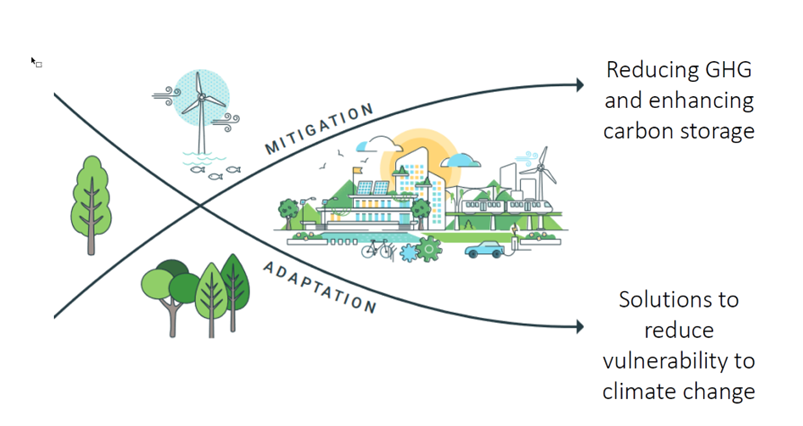The double climate and biodiversity crisis is setting the Anthropocene in an alarming situation : extreme weather events such as floods, droughts, heatwaves, and storm surges are increasing in frequency and magnitude threatening both people and nature .
Simultaneously, the increase of human population and infrastructure adds increasing pressure on nature and cities . Aquatic habitats such as inland wetlands, streams, lakes, coastal zones make up to 6% of Earth surface or 570 million hectares , but are rapidly disappearing, i.e., removed or fragmented. The reductions stem from unsustainable development activities that fail to address the combined climate and biodiversity crisis . As a result, losses of biodiversity (84% decline) and ecosystems services (ES) from aquatic habitats, including carbon storage, climate resilience, and food production are mounting .
In AquaNbS, we propose aquatic nature-based solutions (NbS) as an adaptable and scalable concept to reverse this trend by protecting and restoring aquatic habitats in natural, rural and/or urban systems while mutually benefiting people, and nature
This requires a cross-disciplinary approach that spans the full land-sea continuum as well as considers a complete range of technological, institutional, and economic conditions that shape the opportunities and challenges facing restoration and maintenance of valuable aquatic habitats and their ES.
The Centre mission is to integrate and scale up innovative approaches of aquatic NbS by linking climate, biodiversity, and societal needs, following three specific objectives: SO (1) Mapping and assessing the integrated values of ES restored by aquatic NbS (climate adaptation, mitigation, biodiversity support), SO (2) Co-designing and planning of resilient aquatic NbS, SO (3)Upscaling aquatic NbS by transformative change. Within our stakeholder networks and 11 demonstration projects, our center aims to contribute to a climate resilient and climate-neutral transition. Therefore, we formulate the following research hypotheses: H(1) Aquatic NbS have a large potential for climate adaptation (flood risk reduction, enhanced coastal protection), climate mitigation (carbon storage), and restoration of biodiversity. H(2) High level of stakeholder’s and public/local participation on cross-disciplinary planning, designing, and implementation triggers social innovation, resilience and acceptance of aquatic NbS. H(3) Cross-actor capacity building, training and education assures short- and long-term expansion of aquatic NbS. H(4) Integrated aquatic NbS throughout land-sea continuum scales up ES contributing to UN and EU priorities of carbon neutrality, climate resilience and biodiversity support.
